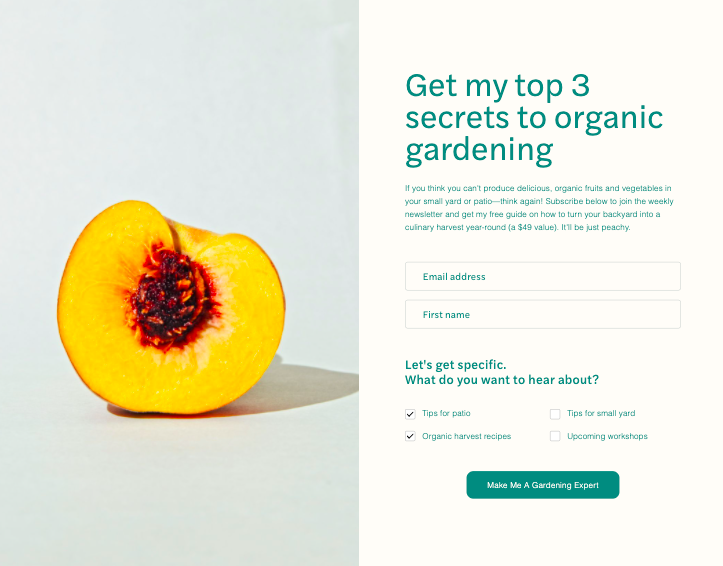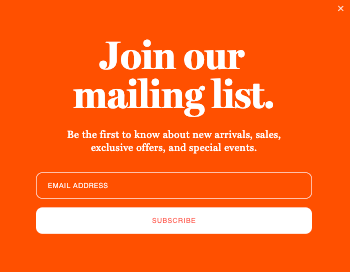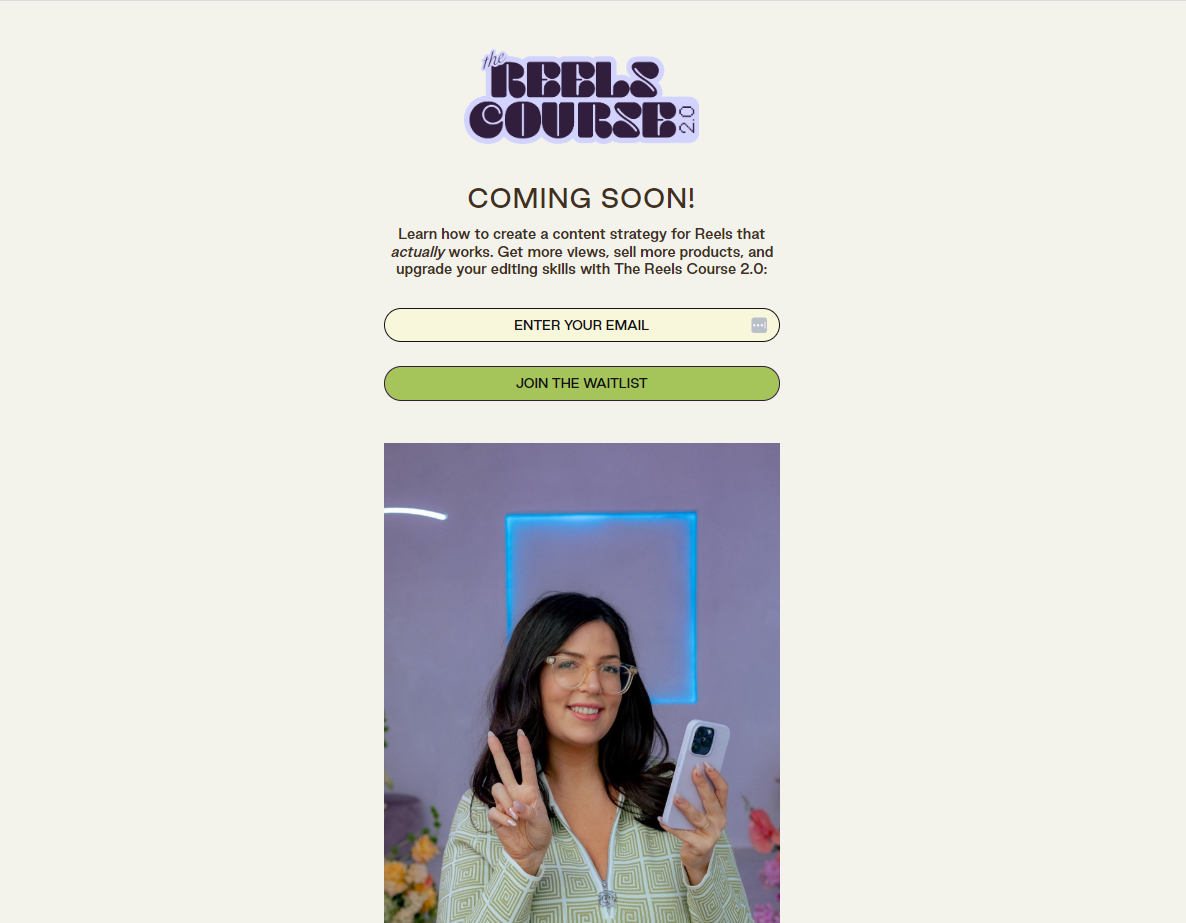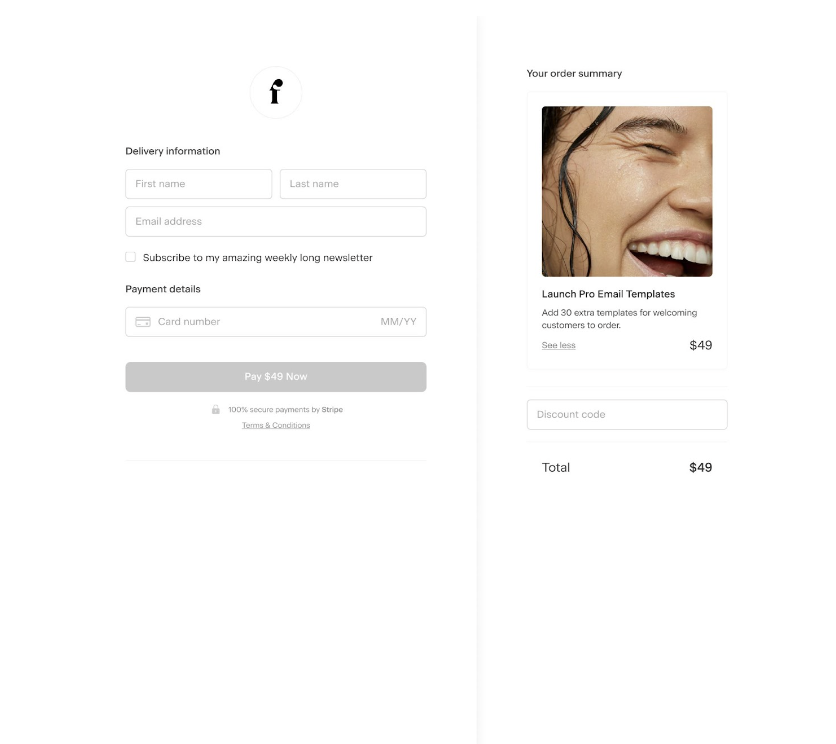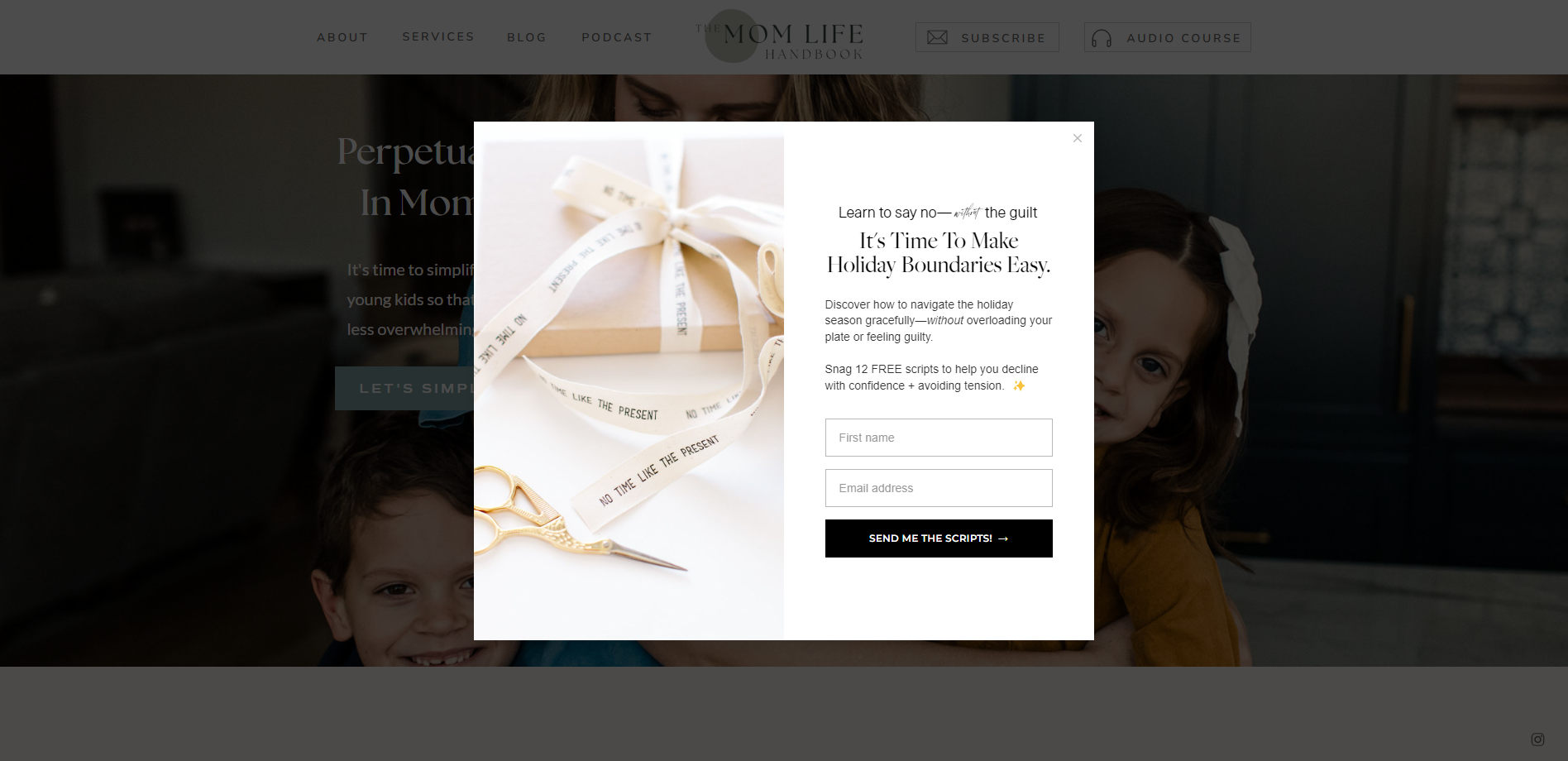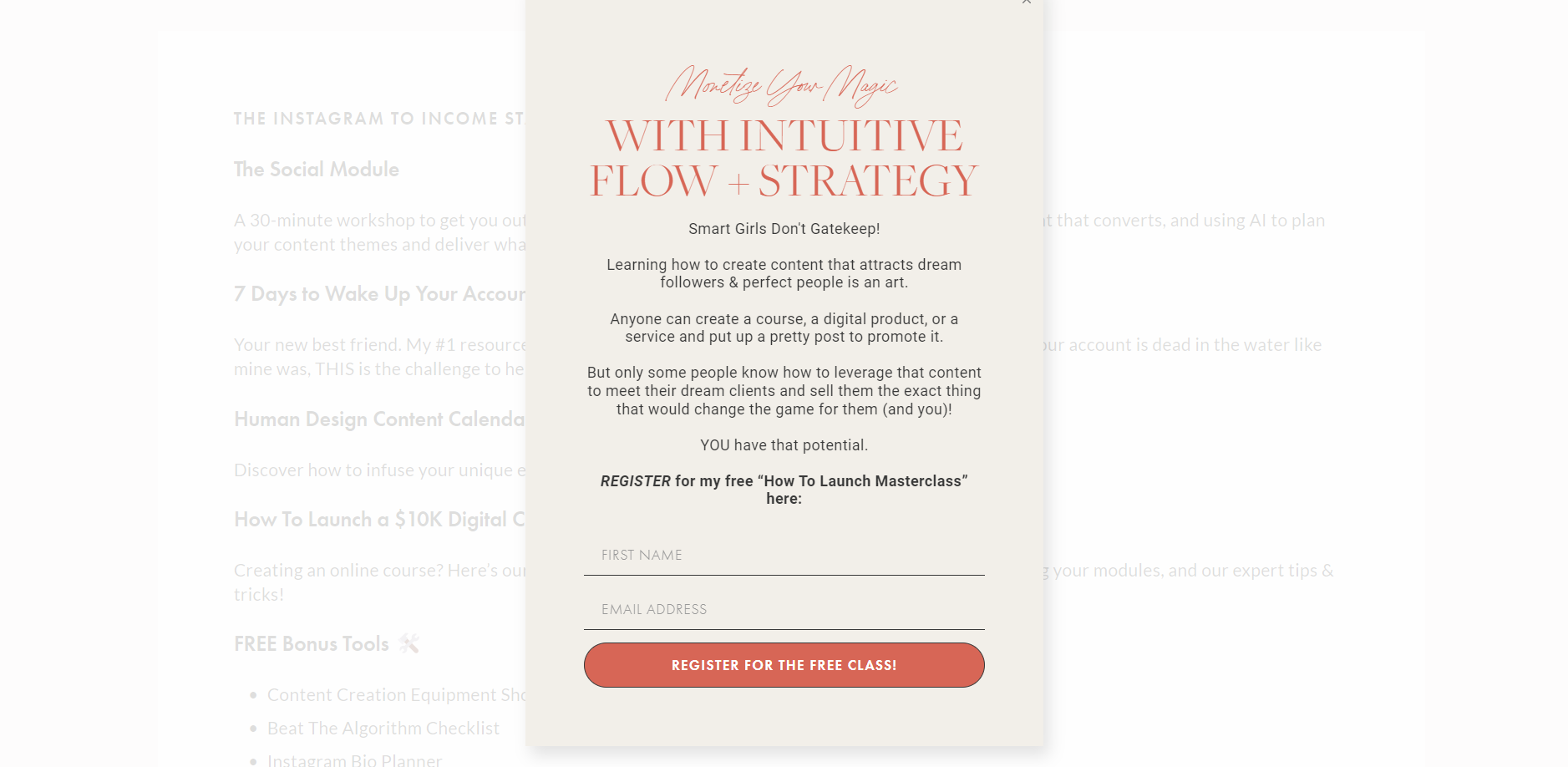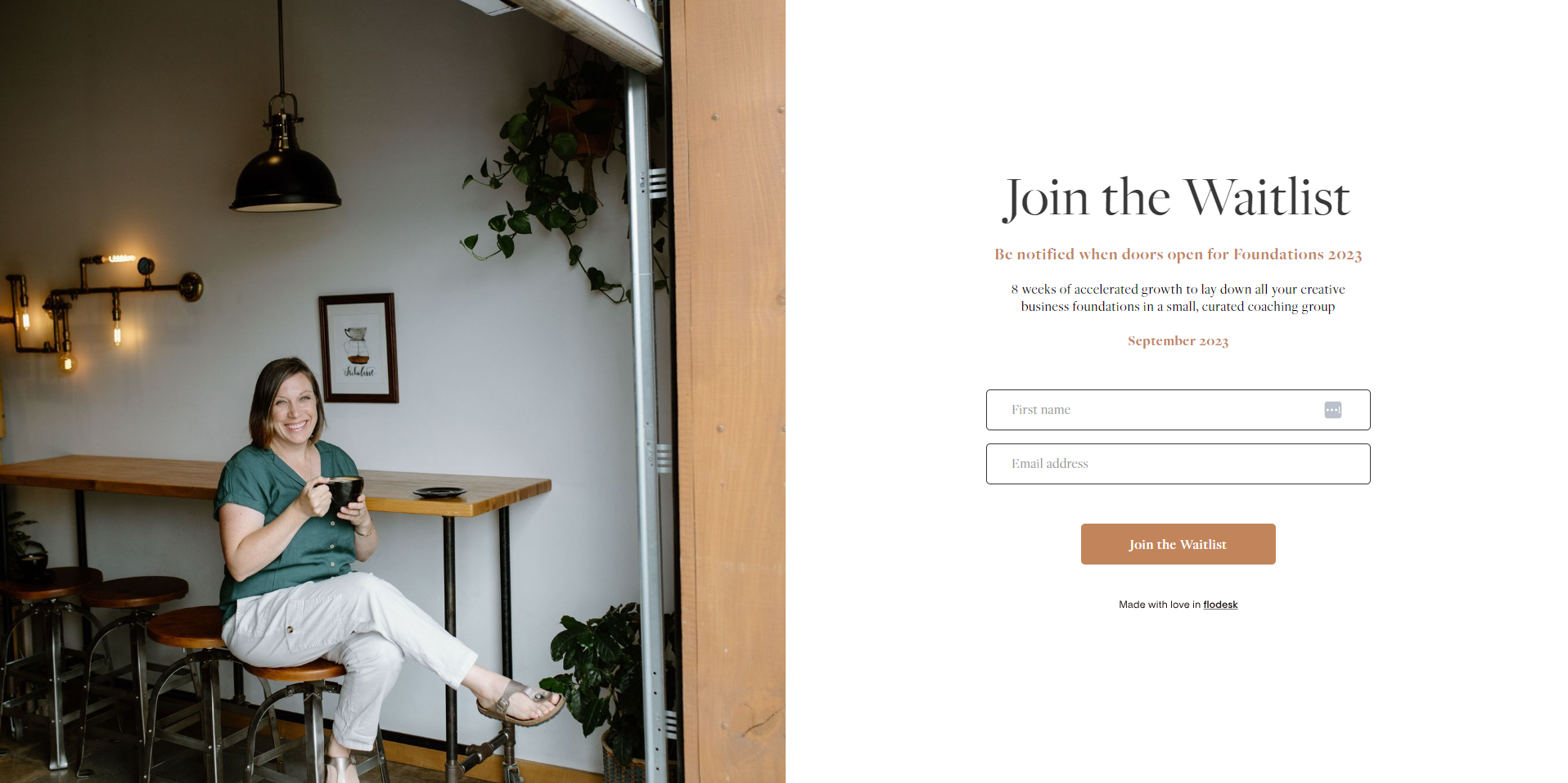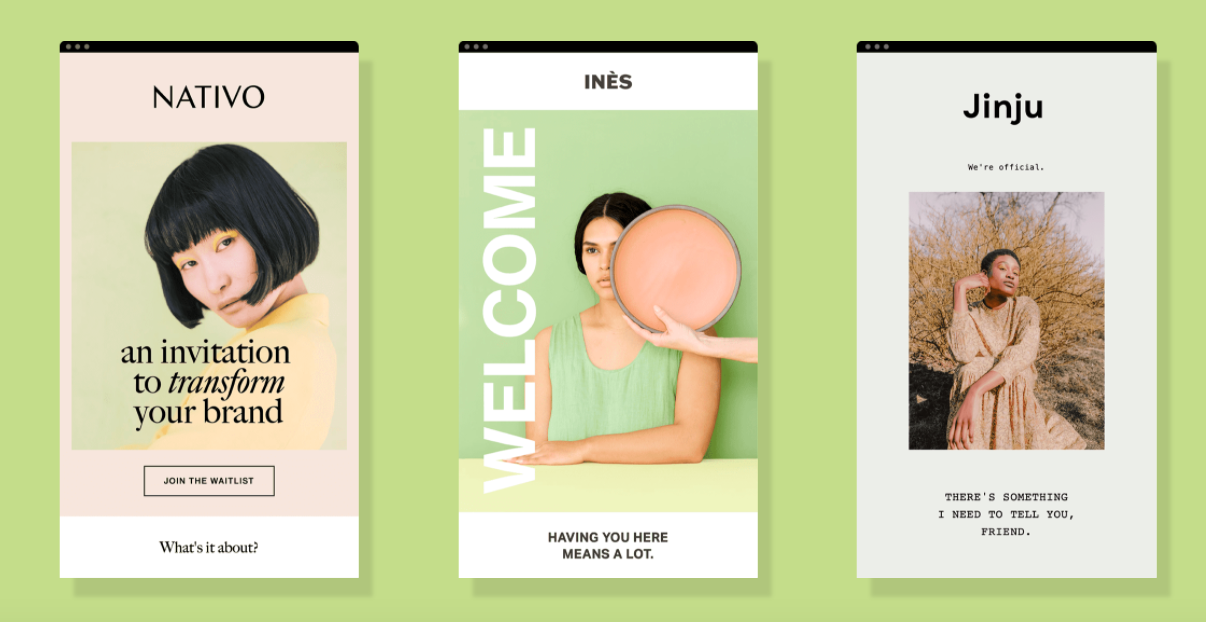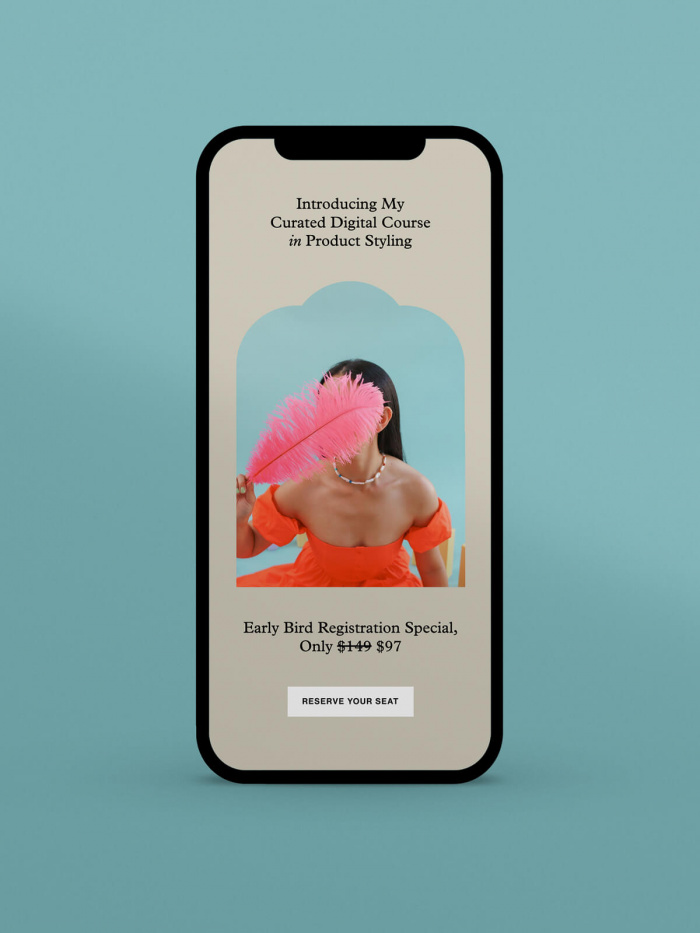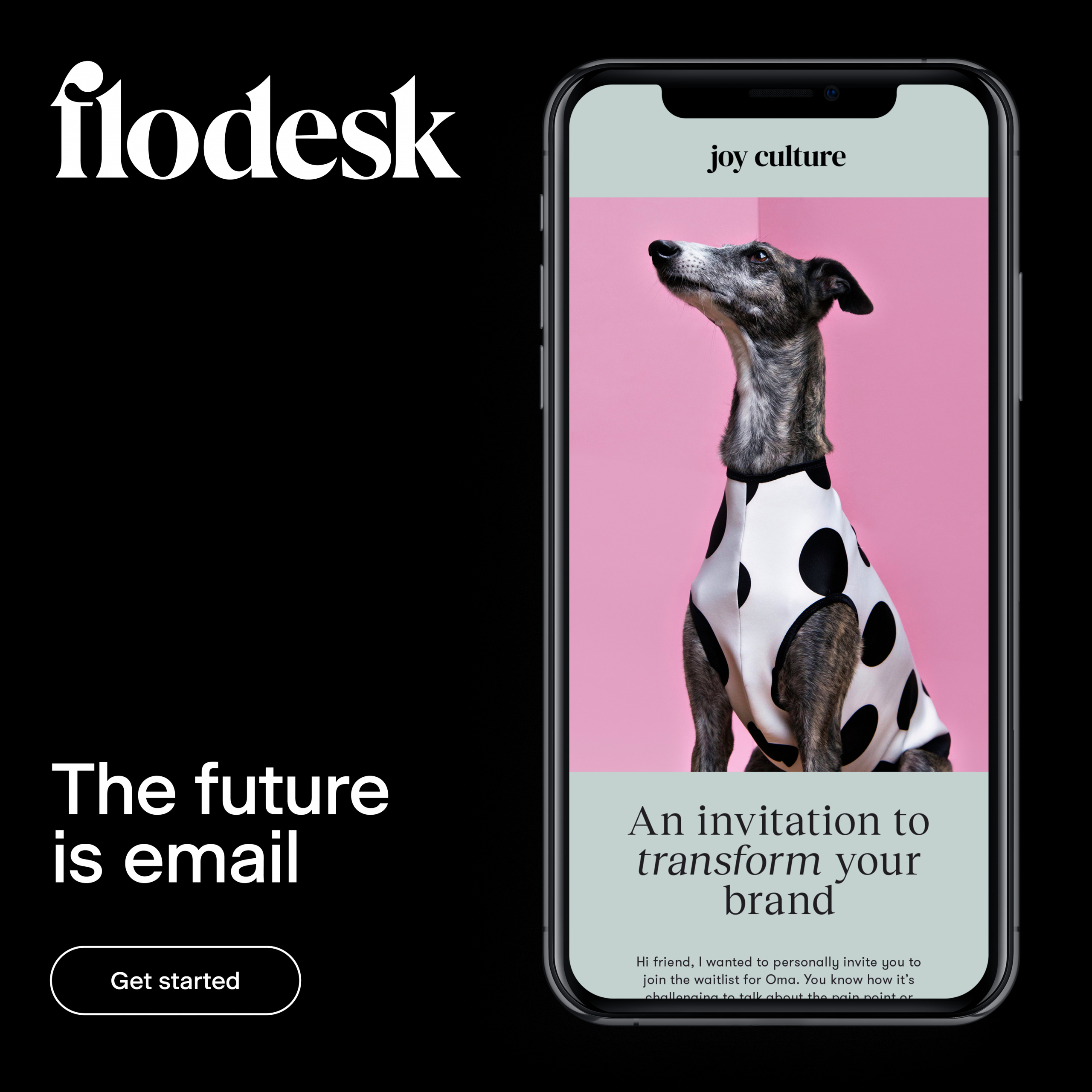20 simple ways to grow your email list
Table of Contents Jump to:
Jump to:
Table of contents
Email marketing generates as much as a 3,600% return on investment (ROI). That means on average, every dollar that businesses spend on their email marketing efforts becomes $36 in income.
Of course, to harness the power of email marketing for your small business and take advantage of this fantastic marketing opportunity, you need an email list.
If you haven’t already got one, don’t worry. We’ve put together this comprehensive guide on how to grow your email list and included some key best practices to keep it in top shape over time.
Why build an email list?
Building an email list allows you to create and foster connections with your audience through strategic email marketing. Your list gives you a direct path to your subscriber’s inboxes—where your content can take center stage, even as a small business owner. Away from the noise of the online space, you’re perfectly positioned to capture attention and earn your audiences’ trust while doing it.
Here are just a few of the benefits of building a healthy email list.
- Boost your sales potential: Email is a top platform for lead generation. Subscribers are more likely to become buyers—by signing up, they’ve expressed interest in your brand.
- Cut down advertising costs: Unlike Facebook, Instagram, or Google Ads where targeting is based on profiling, you know you’re marketing to an engaged audience with email that results in a high ROI.
- Deeper, more loyal customer relationships: Personalization in email marketing allows you to address your audience by name and automate emails based on their interactions with your brand, ultimately earning their trust.
- Encourage return visitors to your website: You can lose website visitors to the internet black hole. Or you can capture their email addresses and send them great content that steers them back to your website.
- Own your contact list: Unlike social algorithms, which constantly change and impact your online visibility, your email list is yours to keep and grow.
How to build your email list on a startup budget
All too often, entrepreneurs hesitate to build their email lists. Whether due to time or budget constraints, uncertainty around how to grow and manage an email list, or an ongoing battle with imposter syndrome, something holds them back
But the best part of building an email list and marketing to subscribers is that it’s equally accessible and powerful for everyone—even small businesses just getting started. All you really need is the right tools for the job.
“You don’t need a big marketing budget to be successful with email marketing. The beauty of email is that no matter your size—whether you’re a small business or a billion-dollar brand—you’re going to get the exact same spot in the inbox.
Regardless of your budget, you can start growing your email list with free tools like Flodesk Forms. Leverage opt-in forms across your brand touchpoints, like your social profiles and website, to turn your audience into subscribers you can market to directly.” —Jordyn Kerr, Flodesk Content Marketing Manager
You can get started with free tools, like a Flodesk Link in bio, which lets you capture your followers’ emails right from your social media profiles. You can start a newsletter, offer a freebie, or share your links in a beautifully designed form that matches your brand. The best part? You don’t need a website. Opt-in forms like the Flodesk Link in bio are fully hosted.
You can also use forms, like embedded inlines, landing pages, or popups strategically on (or off) your website to encourage signups. Ask for your audience’s personal preferences, embed or share your form directly, and use analytics to measure performance.
Don’t have a website for your online business? Get more tactics to grow your subscriber base in our course on how to build an email list without a website.
Turn followers into subscribers with a Flodesk Link in bio
Capture followers’ emails right from your social profiles to grow your list.
B2C vs. B2B email marketing
Depending on whether you’re in the business-to-consumer (B2C) or business-to-business (B2B) space, your approach to list growth and email marketing is going to be different. Understanding these differences will help you craft effective strategies for your audience.
For B2C brands, list growth often centers around incentivizing signups to a broader audience on social media or e-commerce platforms. To prompt engagement, B2C email marketing is typically more visually appealing and emotionally charged. The focus is on promotions, storytelling, and building brand loyalty.
On the other hand, B2B brands’ emphasis is on building relationships with decision-makers at their target businesses. List growth relies on networking, industry events, and personalized outreach. Content typically focuses on providing valuable business solutions.
Let’s take a quick look at the three best list growth tactics for each space.
B2C | B2B | |
Collect subscribers on autopilot | Add a beautiful, branded Flodesk Link in bio to your socials to automatically capture emails to your list. Turn followers into subscribers and drive traffic to your most important links. | Create a free tool (like a calculator, template, or guide) and gate it behind a signup form.
|
Target your ideal audience | Identify your most valuable content and add inline and popup forms to encourage signups. | Create a referral program, enabling your current customers to drive more interest in your brand and get rewarded for it. |
Show your expertise in your field | Use social proof such as reviews or testimonials on your signup forms to highlight how your product or service helped them to overcome a problem they’ve been experiencing. | Run a webinar or podcast where your audience has to sign up for access. Make it a regular event with practical insights that other professionals can benefit from. |
How to grow your email list
Growing an email list is a big undertaking, especially if you’re doing it from scratch. Use these strategies to build a successful email list and, by extension, a thriving business.
- Import your subscribers
- Create an eye-catching opt-in form
- Add a pop-up form to your website
- Promote your list on social media
- Add a link in bio to your socials
- Relate blog post CTAs to your list
- Ask customers to join your list during checkout
- Offer something valuable for opting-in
- Consider referral programs
- Host a webinar
- Create a gated tool
- Open a waitlist
- Start a newsletter
- Set up a limited-time offer
- Focus your email list
- Pinpoint your target audience
- Send a welcome campaign
- Keep UX front of mind
- Clean up your list
- Use great software
1. Import any existing subscribers (and make sure they opt-in!)
You might not necessarily be starting your list from zero, even if you think you are. Make sure you add any email addresses you already have to your subscriber list before thinking about capturing new ones.
For example, you might have existing email addresses if you:
- Previously had an account with another email service provider and are migrating to a new one
- Run a brick-and-mortar shop or online business, and have email addresses in your point-of-sale (POS) system
- Have online documents or physical lists of people who are interested in your product or have previously purchased it
Keep in mind that you’ll need to ask these people to opt-in to your email list, even if you already have their email addresses. Not only does this follow general email marketing best practices, but it keeps you compliant with privacy regulations.
2. Make an eye-catching opt-in form
Opt-in forms are flexible tools that you can use to build your email list. All you need is a great sign-up incentive to go with it.
One idea is to offer potential subscribers a freebie such as a discount code or expert guide, like in the example above, as a motivator. You can also pique people’s interest by sharing the value you consistently deliver to your email subscribers.
If you’re not sure how to begin designing your opt-in form, you’re in luck. Flodesk has gorgeous signup form templates that help you put together a beautiful form with minimal time and effort.
Flodesk opt-in forms are also simple to share via a link, so you can capture email addresses everywhere: in emails, on your website, on social media pages, on landing pages, in Facebook groups, and more.
If you need some design inspiration, take a peek at our top signup form examples.
3. Add a tasteful popup form to your website
Popup forms appear at a set time after a person lands on a webpage. The idea is to give your audience time to explore your site and get to know what you’re about before asking them to sign up.
You can also time a popup to appear when a reader shows exit intent, such as moving their cursor toward the close browser button.
Popups are a fantastic way to turn website visitors into new subscribers, but it’s important to use them correctly. Be sure to keep these best practices in mind:
- Only include one popup on your webpage: Popups are great at communicating information, but adding too many to a single page can interrupt the customer journey and cause people to navigate away.
- Ensure your popup is consistent with your branding: Popups are most effective when they’re designed well and appear like an extension of your website.
- Make your popup easy to close: Don’t “trap” your visitors with popups. They should be easy to close or navigate away from if someone isn’t interested.
Flodesk has a built-in popup form builder, so adding a popup to your website has never been easier. Simply customize one of our stunning, ready-to-use popup form templates, copy and paste one snippet of code into your website editor, and you’ll be ready to start collecting your next visitor’s email address.
Take a look at these website popup examples for some inspiration on what to do on your site.
The most straightforward way to promote your email newsletter on social media is by including a Flodesk Link in bio that leads to your opt-in form. But that’s not all.
To really motivate your audience to join your email newsletter, catch their attention by explaining why they should sign up. Be very clear about the valuable content, advantages, and benefits they’ll get by becoming one of your email subscribers.
This combination of social media and email marketing is wonderful because it provides your business with more opportunities to connect with your target audience. For example, you can use Instagram Stories to hype up your email list and motivate sign-ups. Tease upcoming launches and promotions and hint that your email subscribers will have first access to all the details. You can even add Instagram story stickers that link directly to your opt-in form.
A link in bio is a custom link that sits above the fold on your social profiles. With a Flodesk Link in bio, the link leads to a form where followers can sign up for your email newsletter, explore any special offers, or browse through links to any other content you want to promote.
The real power of the Link in bio is its beautiful on-brand design. You can select one of Flodesk’s gorgeous templates and then customize it with your brand’s colors and font. Then, add your image and your signature, and write a heartfelt bio to really connect with your audience.
In the example below, Taylor Loren uses her Link in bio to create a sense of urgency around her Instagram Reels course. People can enter their email addresses to join the waitlist, giving Taylor the opportunity to send marketing teasers for the course and build excitement.
6. Relate blog post CTAs to your email list
If someone is reading one of your blog posts, they’re probably already interested in what your company has to say. Why not leverage that interest and convert your readers into email subscribers with a powerful CTA?
Imagine you’re a wedding stylist who wrote an excellent, visual blog post on choosing a color palette for a wedding. Your readers would likely be brides, grooms, or couples eager to visualize their big day and get some expert assistance.
That means that they would be fantastic new subscribers to your email list!
Seize this opportunity by adding some call-to-action buttons throughout your blog post, inviting people to join your subscriber list.
Here’s an example:
“I’ve helped more than 100 couples bring their dream wedding to life. Become part of my email community for exclusive content that’ll inspire and guide you in crafting the perfect vision for your special day.”
Unlimited email sends and subscribers for unlimited growth potential
We want you to grow! We’ll never increase pricing for building your list
7. Ask customers to opt-in to your email list during the checkout process
Customers almost always have to submit their email addresses when concluding the checkout process at an e-commerce store. This is a great opportunity to ask them to opt-in to your email list and give consent to receive a wider range of email content.
On this checkout page, the customer is prompted to “Subscribe to my amazing weekly long newsletter” right after entering their delivery information. The opt-in fits seamlessly into the checkout process. They’re already asking for an email and payment information—so it feels like a natural progression for the customer.
Even though many companies automatically add customers to their subscriber lists after they make a purchase, it’s best to ask for express consent. This will result in fewer unsubscribes and complaints down the road.
It’s also a great idea to ask customers to specify their email marketing preferences at this stage. This way, they can specifically opt-in to the communications they’re most interested in receiving.
8. Offer something valuable in exchange for opting-in
One of the oldest tricks in the email list-building book is also one of the most effective. To motivate potential customers to join your subscriber list, offer them something of value in exchange for their email address.
Here are some of the most common exchanges businesses make in return for opting-in:
- A discount code for a first purchase
- A freebie or other gift
- Exclusive access to a new product launch or sale
- A free product trial or session
Valuable content like guides, templates, calculators, eBooks, and white papers that are not publicly available
9. Consider referral programs
Referral programs are initiatives where businesses reward their customers for recommending their brand to other people in their network. For instance, a company might offer a discount to a customer who successfully refers a friend or family member who ends up making a purchase.
These programs are a win-win-win situation. The customer gets access to some kind of perk, the business expands its audience, and the referred potential customer discovers a product or service that might be useful to them.
This same principle could easily be applied to email list building. If one of your customers spreads the word about your business and gets people from their network to opt-in to your email list, offer them some kind of reward or benefit.
10. Run a webinar
Webinars are underrated email collection tools that can make a serious impact on list growth. If you consider yourself an expert in your niche and have information to share with your community, put together a webinar. Spread your knowledge far and wide while adding subscribers to your list.
Start collecting email addresses with your webinar registration list. Create a landing page or signup form and ask participants to enter their contact information to receive your webinar link and access it when it begins.
Webinars also provide a great opportunity to market yourself to your target audience. Anyone listening in can get to know you and understand the kind of value they can expect to receive if they stay on your email list.
11. Create a free tool gated behind an opt-in form
Gated tools are popular in the B2B context. They’re business freebies that are usually designed to save people time or money or to solve a specific pain point they’re facing.
Access to these tools is behind an opt-in form, where your audience has to exchange some key information. Forms always ask for a first name and email. Sometimes, they may include more detail, like job title, industry, and company size.
Here are some examples of gated tools:
- Courses
- Quizzes
- Productivity templates
- Free trials
- Budgeting spreadsheets
12. Open a waitlist
As a small business, you may need to gauge demand around your course, seminar, event, or other product you’re promoting. Try opening a waitlist to test the waters, and build your list in the process.
If you receive a solid response, you know you’re on to something and have validated your idea for a great event, product, or service. If the response is slow, consider focusing your promotional efforts on growing interest before your release date.
If you don’t have one already, starting a newsletter is a great way to foster connection with your audience, boost your sales, and develop a loyal customer base.
People sign up for newsletters for multiple reasons like discovering information, entertainment, and boosting their skills in a certain field. Think about what you can offer in your niche that your audience would be willing to sign up to hear more about.
14. Instill urgency with a limited-time offer
Limited-time offers are effective for generating signups in a short period of time. The “fear of missing out” is a strong motivator for opt-ins.
Say a customer only has 24 hours to get a discount code on a product they’ve been eyeing out for some time. They would most likely sign up for the code without hesitation, and grow your email list in the process.
Email list maintenance and best practices to keep in mind
Email lists are dynamic—you can’t simply collect email addresses and leave it at that. If you want your list to become a key aspect of your marketing and sales strategy, it’ll require some upkeep.
Follow these key maintenance tips and best practices, and you’ll continue to convert qualified leads and keep your subscriber list in great form.
15. Decide on the focus of your email list
If you don’t gain clarity on your email marketing goals, it’ll be harder to be consistent with your content and market yourself to new subscribers. Get clear on this before putting time and effort into building your list.
Start by asking yourself the following questions:
- What kind of value can I deliver to my email subscribers?
- How do I want my subscribers to feel when they receive my emails?
- What kind of email marketing campaigns do I like to receive as a subscriber?
- What kind of email marketing content do my competitors send out? What would I like to replicate and what would I like to change?
16. Nail down your target audience and tone of voice
If you haven’t already determined exactly who your business’s target audience is and what your brand voice is, there’s no time like the present.
When you’re clear on who your target audience is, you can figure out the kind of email content your subscribers are interested in receiving. A rich understanding of your brand tone will guide how you talk to your email subscribers and help you stay consistent in your communications with them.
Here’s a quick brushup on what you should be thinking about:
- Target audience: The group of people you envision would be most interested in your products or services. This is usually determined by demographic and social factors like age, location, profession, and interests.
- Tone of voice (TOV): How your brand expresses itself through words. This relates to everything from how casual or formal your communications are to the expressions and jargon you use. Most businesses put together a document outlining their TOV and update it as necessary.
17. Send a welcome campaign to new subscribers
When people sign up for your email list, they expect to receive some kind of welcome message from you. That’s why it’s so important to create a welcome email automation flow that triggers a welcome campaign as soon as someone opts in.
If you aren’t already familiar with the concept, a welcome campaign is a series of emails that introduces your brand to the new subscribers on your mailing list. These help your potential customers get to know your business and what you’re all about, and usually provide some kind of value right off the bat.
Welcome campaigns can be as little as one or as many as five emails. Either way, they should get the following information across:
- What makes you tick as a company: Share your brand mission, story, values, and objectives. Be enthusiastic, get buy-in early on, and explain why you’re so passionate about what you do.
- There’s something in it for the subscriber: Be sure to appreciate the fact that your new subscriber joined your email community! Thank them with a discount code, exclusive access, membership in a private Facebook group, or content upgrades.
- Build trust and rapport: Start things off on the right foot by letting new subscribers know they can trust you. Do this by being transparent about your brand, letting them know how they can reach you, sharing authentic reviews and testimonials, and talking to them in a personable manner.
- Open the door for conversation: To build a mutually beneficial relationship with your subscribers, it’s important to keep the conversation going and be open to feedback. Let new subscribers know that you value their opinions and would like to hear from them should they have any questions, comments, or concerns.
- Explain how you can help your subscribers: Whether you sell products or services, you’re providing your customers with something that can help them solve a problem. Make this clear in your welcome campaign. For instance, if you’re selling family photography sessions, explain your approach to making everyone comfortable in front of the camera to set them at ease.
Stunning, branded emails? Yes, please!
Send unlimited, beautifully-designed emails to subscribers—we won’t increase pricing for a growing list
18. Keep user experience in mind
Building an email list is important, but it shouldn’t come at the expense of user experience (UX). In this case, UX refers to the holistic experience subscribers have with your brand from beginning to end.
An overly aggressive list-building strategy can come off as spammy and easily lead to annoyed, frustrated, or even angry audience members. This translates into negative UX and can unfortunately reflect poorly on your brand as a whole.
Here are a few key insights to keep in mind to ensure your email marketing efforts produce great UX for your audience:
- Be intentional with popups: If you’re using a popup form to collect email addresses, stick to a tasteful design that isn’t overly intrusive for anyone browsing your website. Ideally, the popup should be easy to complete or close in just a couple of clicks.
- Go beyond sales: Email marketing is a key tool to drive sales, but you need to provide more than just sales-related content to your subscribers—think “value.” Remember, it needs to be clear why they benefit from being on your email list. New subscribers may become irritated if you bombard them with sales content right away.
- Make it easy to adjust email preferences and/or unsubscribe: It’s never a good feeling when one of your readers wants to unsubscribe from your list, but doing so should be easy. It’s also a good idea to allow subscribers to seamlessly adjust email frequency and preferences. This way, they’re always receiving relevant content they’re genuinely interested in.
19. Make email list clean up a habit
To maintain a high-quality email list, you’ll need to clean it up from time to time. Email list cleaning refers to the process of organizing, updating, and optimizing your subscribers.
A subscriber list full of unresponsive readers simply won’t serve your business well. Ideally, your list should be full of people who want to receive your emails and are generally engaged with your content.
A clean email list generally enjoys higher deliverability rates, lower bounce rates, fewer complaints, and lower costs. It also results in a better sender reputation overall.
Here are a few effective actions you can take to clean your email list:
- Send out a re-engagement campaign to disengaged and inactive subscribers
- Remove inactive subscribers who don’t respond to re-engagement initiatives if necessary
- If you’re experiencing higher-than-normal bounce rates, identify the cause and work to resolve it
- Make sure your audience segmentation is well-organized, working correctly, and doesn’t need any adjustments
By far, the best thing you can do to make list building and email marketing as straightforward and enjoyable as possible is to use premium software like Flodesk.
Our email marketing platform is fully equipped with marketing automations, popup and signup form builders, and stunning email templates that you can customize with our intuitive builder. It’s got all the tools you’ll ever need to run excellent email campaigns.
Flodesk excels when it comes to email newsletter design. Our gorgeous, fully customizable templates will help you produce content that stands out, captures attention, and drives more sign-ups to your Flodesk email list.
If you’re not ready to pay for an email marketing software right now, Flodesk Link in bio is completely free to use. And when you’re ready to start sending emails, enjoy Flodesk Email’s flat-rate pricing. We’ll never penalize you for successfully growing your list. Start free with Flodesk Forms, or upgrade to Flodesk email marketing for a flat rate of $35 per month.
Watch your new email subscribers start rolling in
Building an email list can be a daunting task, but the hardest part is taking the first step.
Remember, email marketing is an invaluable addition to any business’s toolbelt, so you’ve got nothing to lose and a whole lot to gain by getting started.
Follow these tips and you’ll be ready to start collecting email addresses and build out your subscriber list right away.
All that’s left to do is watch your subscriber count start soaring!
Frequently asked questions
1. What’s the fastest way to build an email list?
There’s no quick and easy way to build a high-quality email list. Nevertheless, there are several strategies you can use to speed up the process and watch your subscriber count grow.
Create a freebie offering high-value content that you know resonates with your audience. Promote the freebie across your website and social media pages.
You can also set up a limited-time offer or open a waitlist using a signup form that collects emails for your list.
Lastly, be sure to promote your email list on all your marketing channels and be explicit about the kind of value it delivers to subscribers.
2. How do I start an email list from scratch?
Starting an email list from scratch isn’t easy, but there’s no time like the present to get started.
First, equip yourself with premium email marketing software and small business social media tools that align with your company’s needs. These will give you the leverage you need to start building your list and set up your email marketing strategy.
Once you’ve imported the subscriber information you might have collected elsewhere, it’s time to get started building your list. Opt-in forms, popups, landing pages, social media promotion, exclusive discounts, and referral programs are just some of the tools at your disposal to help drive signups and ultimately increase your subscriber count.
3. How long does it take to build an email list?
Email lists are dynamic, so they can’t be built in a specific period of time. And you’re never really “finished” building an email list—you’ll constantly be cleaning, optimizing, and expanding your list over time. How quickly you can build your email list depends on how consistent and intentional you are with your list-building strategy.
Nevertheless, most businesses can grow a decent-sized list (relative to their business size) in three to six months when they dedicate a decent amount of time and effort to it.

